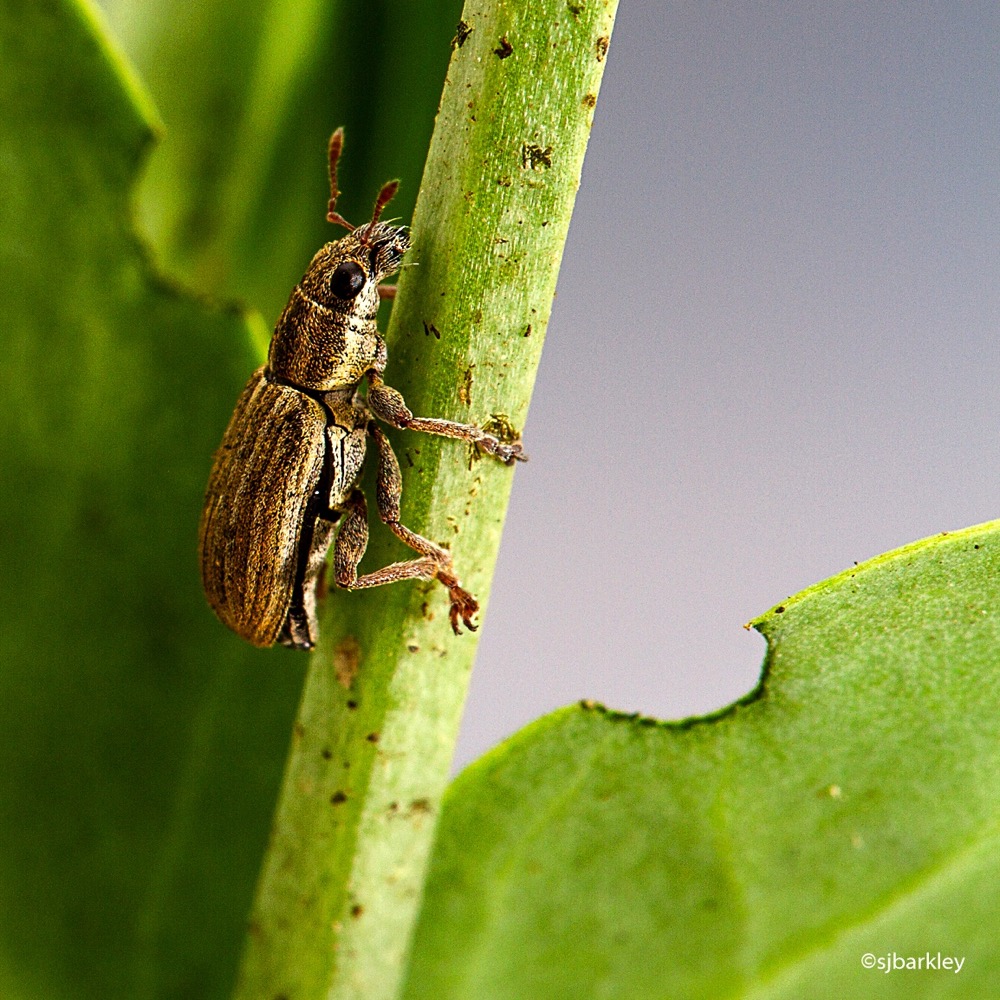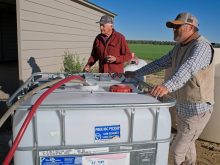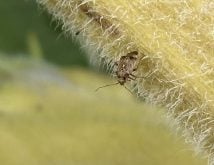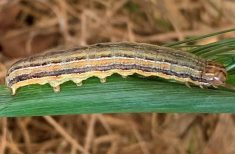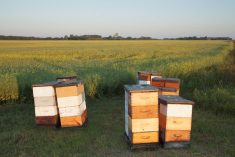Pea leaf weevil numbers are on the rise. In fact, according to Scott Meers, an entomologist with Alberta Agriculture and Forestry, they’re moving into areas where producers have no experience with them at all.
“We’ve seen a major expansion in the past several years of pea leaf weevil, especially up the west side of central Alberta,” Meers said. “We’re now finding pea leaf weevil well north and west of Edmonton, so that means it’s moving into areas where people have no experience with it.”
Read Also

Cancer agency reclassifies another herbicide ‘probably carcinogenic’
The WHO’s cancer research agency has now put atrazine, a herbicide well known to corn growers, in the same potential-hazard category where the agency put glyphosate.
While it’s not a strict forecast, Meers said experience shows that problem areas surface where heavy infestations were in the previous year.
Pea leaf weevil is a common pest in field peas and faba beans, primarily affecting crops grown in Alberta and Saskatchewan. Pea leaf weevil begins feeding as soon as the weather is warm enough. They can be problematic in a warm spring, especially if their arrival coincides with crop emergence. The pest remains active until August, right through to the six- to eight-node stage, Meers said.
“A lot of weevils are active until August, but we’re really concerned about the early stages,” he said.
- Read more: Want better insect surveys? Here’s how you can help
- Read more: Want to know which bugs are in your fields? Try traps
Of more concern, though, are the weevil larvae. They will go down into the soil and attack the nodules, Meers said. “The real loss is from the loss of the nodules and the resulting loss in nitrogen,” he explained. “That’s where the yield loss comes from. That, of course, is not as obvious unless you are actually digging up plants and looking for them.”
Hard to monitor
According to Hector Cárcamo, a research scientist with the insect pest management department of Agriculture and Agri-Food Canada, adult pea leaf weevils are difficult to monitor, especially since they tend to drop to the ground when approached. Their colour also makes them difficult to see against the soil. For this reason, he suggests waiting quietly until weevils begin moving again. Weevils are most easily observed during the warmest part of the day, so late morning to mid-afternoon.
Threshold is determined by counting seedlings with terminal leaf feeding. “Probably the most obvious thing they will notice is leaf feeding,” Meers said. “It looks like somebody took a hole punch and just punched out holes along the edge of the leave, so you get these half-circle notches that are cut right out of the edge of the leaf.”

Generally, leaf feeding does not impact yield; however, larval feeding on nitrogen-fixing nodules can. Only faba beans and field peas are at risk of yield loss.
There is a nominal threshold for pea leaf weevil in peas, Meers said, and that’s one in three clam leaves. “By clam leaves, we mean the most recently emerged leaves,” he explained. “The most recently emerged leaves are still folded together, so you have a pair of leaves together and they look like they’re a clam shell.”
To assess threshold levels, look at those clam leaves and if you’re getting, on average, one out of three — so 33 per cent — of the clam leaves with feeding damage on them, even a single notch, that is actually threshold level.
There is no nominal threshold in faba beans.
While threshold counts will help with the decision to use a seed treatment in the following year, the only real option for controlling pea leaf weevil is foliar insecticide. “The problem is we haven’t been seeing yield response from applications of foliar insecticide,” Meers said. “It stops the feeding, but it doesn’t protect yield.”
Insecticide will kill the weevils in the field, but eggs that have been laid will hatch and the emerging larvae will still feed. Meers doesn’t recommend using a foliar insecticide unless leaf feeding is very extreme.


